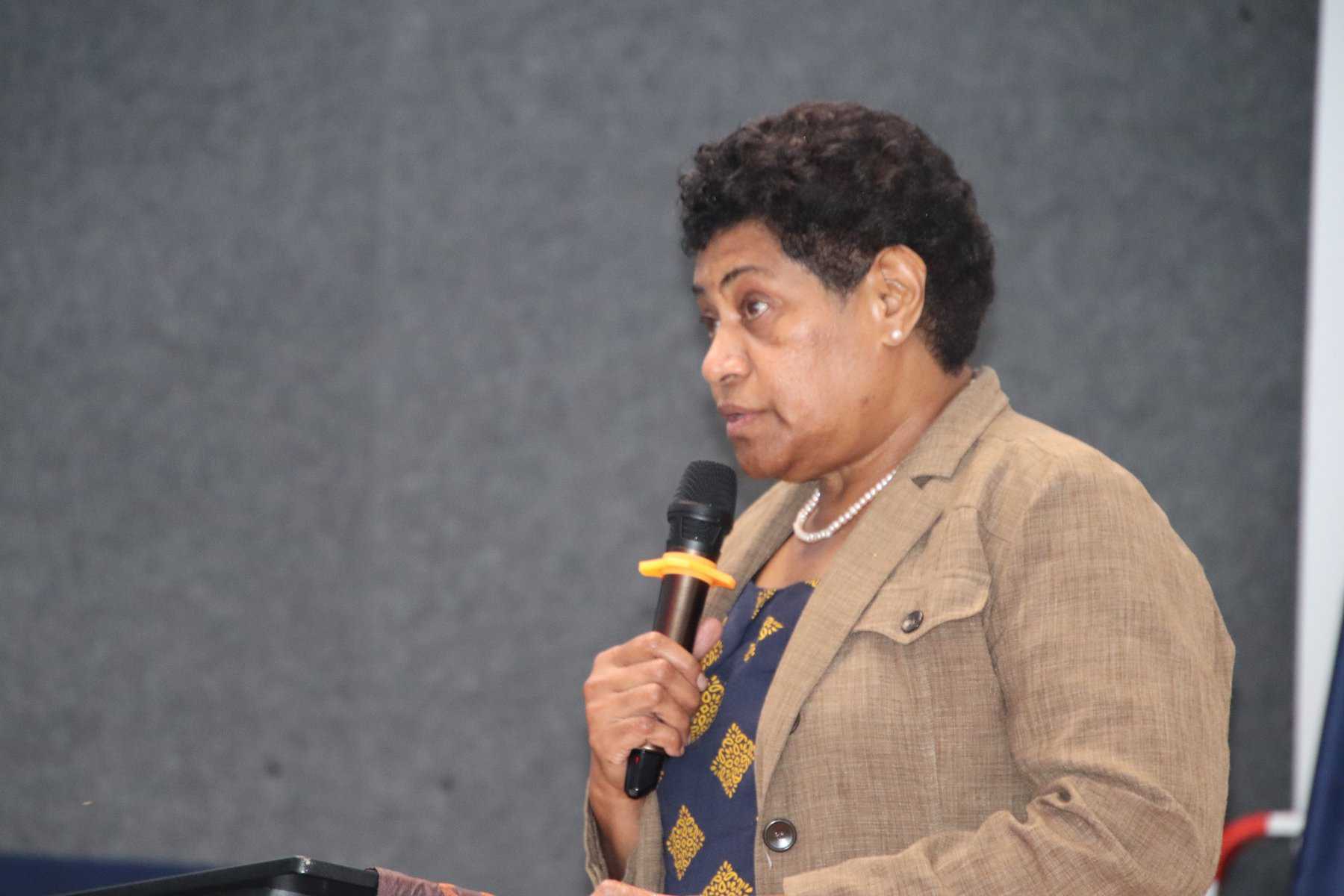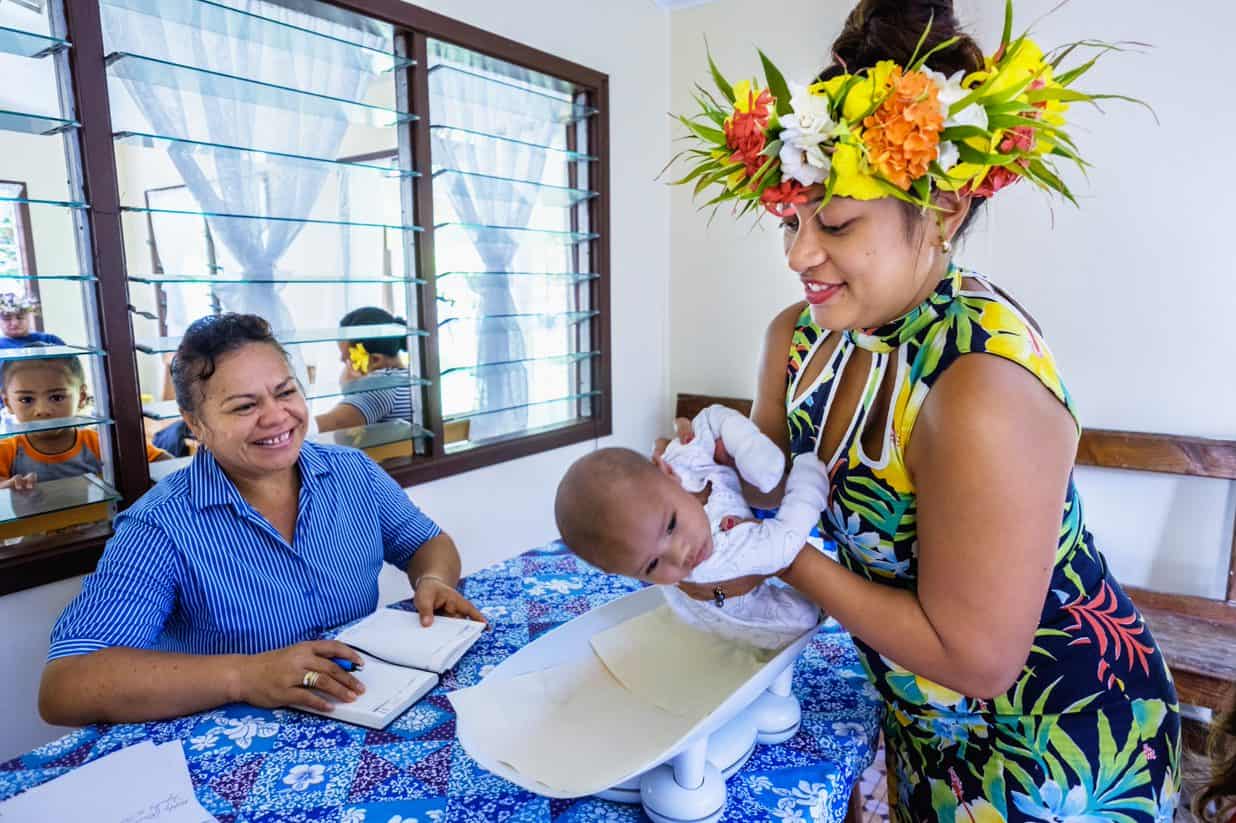‘An unprecedented shortage’
Pacific Heads of Health have heard that the shortage of skilled nurses in the region is “unprecedented and poses a threat to the stability, accessibility and quality of essential care delivered at primary, secondary and tertiary levels.”
Concerns about the nursing shortage were raised in a number of papers provided to the Heads of Health (HoH) ahead of their regional summit this month.
The papers, which have been produced by the Pacific Community (SPC), note that this is not a new concern, as since 2013, “inadequate human resources for health have been a constant theme of discussions, resolutions and recommendations,” but that these shortages have escalated considerably in recent years.
“National leadership and governance to advance the health workforce agenda remains weak; while the departure of qualified health staff causes already difficult working conditions to worsen. There is inadequate and/or fragmented health workforce data to guide policy decisions, obsolete or non-existent strategic health workforce plans and inadequate resources. In addition, regulation and accreditation requirements differ across the region and the health education and training capacity for pre-service and continued professional development is of variable quality and often insufficient quality,” the Heads of Health (HoH) have been cautioned.
The President of the Fiji Nursing Association, Dr Alisi Vudiniabola, agrees that the nursing shortage has been building for some time, but asserts that it has gone unaddressed by government.
“I think we underestimated the migration power of nurses,” Dr Vudiniabola says.
“The impact it has had on patient care is unbelievable,” she adds, noting that the effect can be felt not only on wards and in clinics, but also in pared-back outreach programs, health promotion programs, and home visits. “If we don’t address the issues facing the community, you will get a full hospital. If you see a hospital full of patients, then you’ll know something is wrong.”

A global problem
There are an estimated 9.84 nurses per 10,000 people across the Pacific, and they deliver most health services, especially in remote islands, says the SPC.
“Whenever we have meetings with other Pacific Island countries, we talk about the migration of nurses,” Dr Vudiniabola says. “[Once] Fiji was still able to cope, unlike small island countries in the Pacific like Tokelau, Nauru, Cook Islands. Those island countries were having a shortage of nurses because they can’t really train a big number of nurses.”
COVID exacerbated the problem, the SPC notes: “Provision of quality care in critically ill patients exhausted an already small workforce and frontline workers that lacked training in specialised care. This affected the mental health and wellbeing of health workers who felt unprepared to manage critically unwell patients, as well as communities who felt unsupported by health system.”
However, the nursing shortage is not confined to our region.
A report released this month by the World Health Professionals Alliance and the World Health Organisation has revealed the extent of physical and psychological damage done to healthcare professionals during the pandemic.
The report, What the Covid-19 pandemic has exposed: the findings of five global health workforce professions, says healthcare workers feared for their personal safety during the pandemic because of a lack of protective equipment, and the absence of any systematic support and security left many feeling undervalued.
Howard Catton, who is Chief Executive Officer of the International Council of Nurses (ICN) and co-authored the report, noted: “Around the world, prior underinvestment in health systems meant that they failed the health professionals and multidisciplinary teams that are the life blood, the very essence, of our health care services.”
He continued: “We need governments to honour the contribution of nurses and others during the pandemic, elevate them to positions where they can more directly influence health care policies, and make sure that they never again have to face a deadly pandemic without the care, support and protection that they deserve.”
International recruitment
Fiji’s Minister for Health, Dr Atonio Lalabalavu, recently told parliament that 807 nurses resigned from the ministry just last year.
The SPC says this number represents “one-fifth of the entire Fijian nursing pool lost to one nation and there are now only 3000 nurses left in Fiji.”
While some of these nurses have resigned to work at Lautoka and Ba hospitals, which are operated by Australian health care company Aspen Medical, many more of them have gone to work overseas under various labour mobility schemes, or have been recruited into the health services of Fiji’s neighbours. Dr Vudiniabola says some have even gone to work for the national airline.
“The shortage of nurses is really complex and has many factors and it differs from country to country, especially in the Pacific,” she says. These factors include better opportunities for professional development, poor working conditions in the islands, and pay.
“We had a policy that was put up by the government that nurses are not to work overtime because they will not be paid… When it’s just a blanket policy like that, it affects the nurses who without a choice, are continuously working. And the nurses affected include those who live and work in rural and remote nursing stations.,” Dr Vudiniabola says.
She adds that risk allowances which were paid to nurses working in mental health and other higher-risk settings, were also eliminated: “So, you’ve got a population of nurses who are quite vulnerable in their workplace.”
She says trends have also changed, with more mature nurses—those aged 50-55–resigning to work elsewhere, and not just earlier career nurses as was previously the case.
“When you lose a nurse, you also lose the skill, the maturity, leadership and care, not only for patients but also for the younger nurses that need to be nurtured in the ward,” Dr Vudiniabola adds.
The SPC notes that the WHO Global Code of Practice on the International Recruitment of Health Personnel promotes ethical migration of the health workforce and discourages active recruitment from countries with critical health workforce shortages.
While Pacific countries have raised concerns over the working conditions and social impacts of labour migrants and seasonal workers to Australia and New Zealand in other sectors, the impact on the region’s health sectors has not figured as prominently or publicly.
Some nurses are leaving to work in Australia’s aged care sector. Employment Minister, Agni Deo Singh recently visited Fijian aged-care workers (not all of them nurses) in Goulburn and Canberra, including some working for HealthX, the largest employer in the sector. The company employs 282 Fijians across Australia, and their representatives regularly visit Fiji to talk to training institutions, government and potential recruits.
Last September, HealthX CEO, Carollyne Palling said, “HealthX has been looking at ways to increase the number of Pacific aged-care graduates under the PALM scheme and has worked with APTC [Australia Pacific Training Coalition] on the aged-care pilot (Aged Care Plus).
“We also sincerely acknowledge the ongoing work of APTC to train aged-care graduates, however, we believe a solution of scale is required to meet the workforce demands of aged-care in Australia and to support the aim of the Pacific labour mobility.”
Palling’s comments reflect the reality that there are still insufficient aged care workers to meet the demand in Australia.
Earlier this month, Wesley Mission announced it was closing its three remaining aged care centres in Sydney due to staffing issues.
New government regulations, which require the presence of registered nurses 24/7 at centres, are contributing to workforce pressures there, with Australia’s Aged Care Minister, Anika Wells telling Australian media that 5% of providers would not be able to meet the requirement.
Recruitment and training

In Fiji last November, the Ministry of Health hired 206 nurses, with more to be recruited next month (May) and in November this year. The health ministry also intends to establish 50 new nursing assistants, and 50 new nursing aid positions. The retirement age for nurses has been raised to 60 (consistent with other civil service positions), and Health Minister, Dr Lalabalavu assured delegates to the recent Fiji Nursing Association AGM that the government will work to improve staff living and working conditions.
Regionally, the nursing shortage is exacerbated by weak human resources departments in ministries of health, that lack dedicated, trained HR staff and have little authority to take strategic decisions, says the SPC.
A lack of robust and detailed health workforce data is also a problem, with data collection often slow and fragmented amongst different stakeholders and government departments.
“There is a need for evidence-based, coherent and transparent pathways and policies that enable healthcare workers to move between the various levels of work and education to promote staff qualification and retention,” the SPC observes.
Papers to the Heads of Health meeting also suggest regional regulation of training institutes, and standardisation of curricula to ensure quality training is delivered.
Ensuring nurses have senior leadership roles is also key to retention.
Heads of Health have been urged to “recognise and support nursing leadership, ensuring they are included in the executive leadership team of each country’s health system, with appropriate remuneration and authority.”
Despite the immense pressures that COVID-19 placed on health systems worldwide, initiatives that gained momentum during the pandemic such as digital health and telemedicine, remote monitoring for chronic conditions, enhanced contract tracing applications, and optimisation of service delivery, are gains that Pacific health services should build upon.
Ultimately however, the entreaties of nurses, their unions and other experts in the sector to stem the outward flow of nurses (and other health professionals) are futile if there is no action to back the rhetoric supporting change.
“One of our very senior nurses collapsed and died last year in the recovery ward,” Dr Vudiniabola recalls. “She was the former manager of the operating theatre. We found out that she had been working right through the weekend and got sick on Monday, so she rested in her office. And this is because of the shortage of nurses. It was the last place for her to collapse and die. It’s like dying of hunger in a restaurant.”
Clearly, a shift in the remuneration, conditions and prospects for these health professionals is a matter of life and death, not only for patients, but also for the nurses who care for them.
